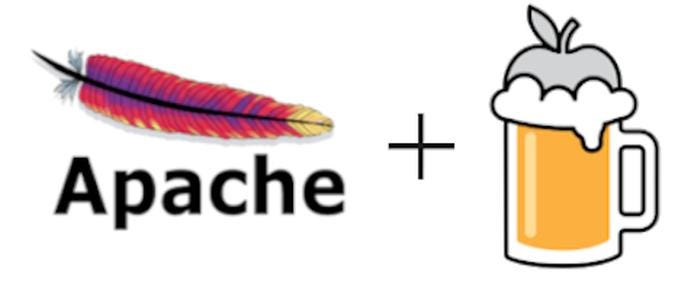Fortunatly we could use pre-built gccemacs right now.
- Install command: brew install iperf3. Bottle (binary package) installation support provided for macOS releases: Intel: big sur:: catalina.
- Install and configure Apache. MacOS 10.15 Catalina comes with Apache pre-installed. However, instead of using the delivered version, we’re going to install Apache via Homebrew and then configure it to run on port 80. If you already have the pre-installed Apache running, it will need to be shut down first and any auto-loading scripts removed.
ShawnstationdeMacBook-Pro: shawnstation$ brew -version Homebrew 1.6.9 Homebrew/homebrew-core (git revision fab7d; last commit 2018-07-07) catalina homebrew Share. How to Uninstall & Remove Homebrew in Mac OS There are a few ways to uninstall Homebrew and remove it from a Mac. Perhaps the simplest method is using a single command string entered into the Terminal, just as you run a ruby and curl command in the command line to install Homebrew, you also run a ruby and curl command to uninstall Homebrew.
Those two repos did the greate job for us.
Here is the tutorial:
Install nix
How To Install Homebrew On Catalina
For MacOS catalina
Install
Update
For MacOS sierra
Install
Update
It's done
Launch emacs from terminal, and you could find related app bundle's path by right click emacs icon in Docker.
It's a hard time to make gccemacs work on MacOS catalina. I've met countless problems by following every tutorials I can get from google. Fortunately I finally get it work!
Hope this tutorial could help you.
GCC with libgccjit enabled

cd /usr/local/Homebrew/Library/Taps/homebrew/homebrew-core/Formula
Edit gcc.rb like this
Build gcc by homebrewbrew install gcc --build-from-source --force
Get gccemacs source code
Clone https://github.com/emacs-mirror/emacs and checkout feature/native-comp branch.
Build using this script
Create a build.sh outside emacs source code folder.
To use Spacemacs
No special actions are needed.
To use Doom
Latest doom already support to compile all modules with native-comp.
Update to latest version.
To do so, upgrade doom to latest version.doom upgrade
Compile all modules
After that, do doom sync to compile all modules.
Generate local env file
Run doom env to generate local env file.
It's done.
Open emacs and feel the performance boost. Enjoy!

The easiest way to install a number of Unix style applications and open source software onto macOS Big Sur, Catalina, Mojave and earlier Sierra OS versions is via a package manager, unfortunately, macOS Big Sur doesn’t come with one, but fortunately, some good folks care, they come in the form of Homebrew.
The install of Homebrew also works on macOS Catalina, macOS Mojave, (High)Sierra, El Capitan, and Yosemite, so macOS 10.10 – 10.14
Homebrew isn’t the only option, also available is MacPorts and Fink but Homebrew is the newest and most popular of the trio.
Install Homebrew
To download install Homebrew run the install script on the command line as below and let the script do its thing:
If you don’t have Apples Xcode Command Line Tools installed it will alert you to that it will install it and carry on with the Homebrew installation and download the Command Line Tools you will need to enter your admin password at some point.
Then Homebrew is installed.
After this Homebrew is installed and ready to install other apps.
To get started run brew help can give some command example usage.
To check for any issues with the Homebrew install run:
Macos Catalina Install Homebrew
One issue that typically comes up is an outdated or missing version of Xcode.
For the latest macOS, brew doctor will warn that the Homebrew install won’t be 100% if Xcode is not up to date, so update Xcode from the App Store.
To search for an application:
To install
To list all apps installed by Homebrew
To remove an installed application
To update Homebrew itself
To see what packages are out of date but not to upgrade them
To see what upgrade packages all or singular
To hold a package at a certain version
To release a package from a certain version
To see what else you can do
Where does Homebrew install stuff …. in the Cellar
Where the brew lives.
Macos Install Homebrew Catalina Free
You can see your Homebrew configuration by running
The output should be similar to …
All installations via Homebrew are filed independently in the filing system in /usr/local/Cellar and linked into /usr/local/bin which is a directory which allows you to run these commands and apps as if part of the regular operating system.
This directory is also out of the SIP bounds so there should be no authentication macOS error dialog boxes.
Remove Home-brew and all packages
Macos Install Homebrew Catalina 2019

How To Install Homebrew On Mac Catalina
To remove the Home-brew installation and all packages it has installed..
Macos Install Homebrew Catalina Update
HomeBrew is a great package manager just start installing some apps and explore.!